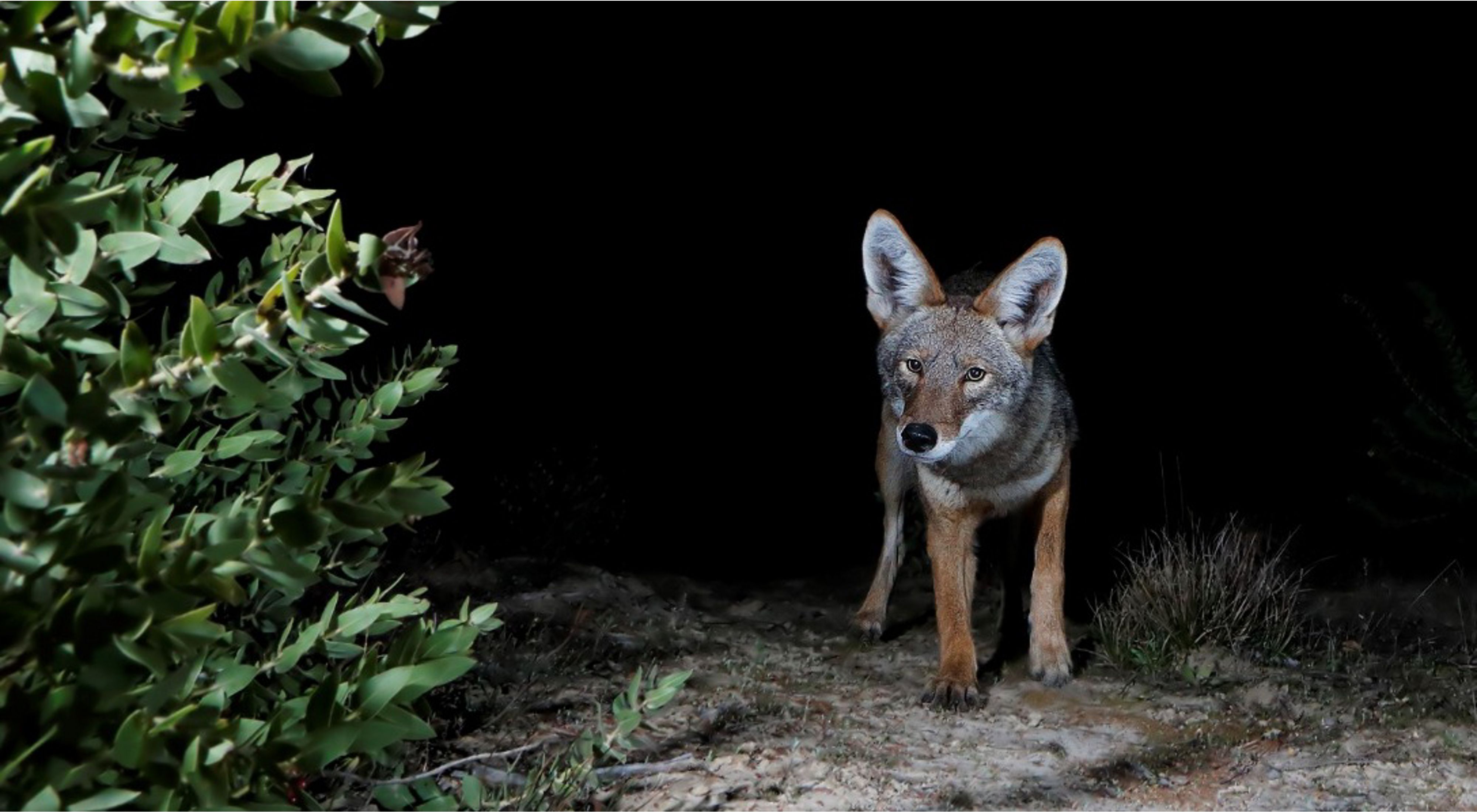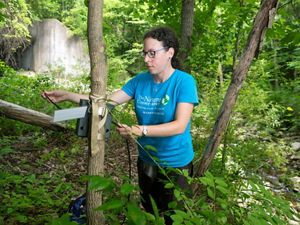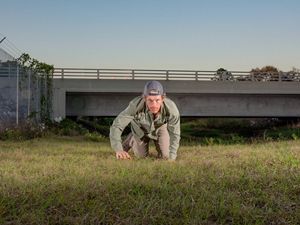Wildlife Caught on Camera
From kestrels to coyotes, we're bringing wild animals to a screen near you.
Get More Nature in Your Inbox
Get the best nature stories, news, and opportunities delivered monthly.
Subscribe TodayFronds unfurl. Bird eggs hatch. Coyotes hunt. Though we usually don't see them in real time, these fascinating natural events continually unfold around us.
In fact, most of us will go our entire lives without seeing a mountain lion in the wild or an eaglet fledging its nest. Thankfully, we have wildlife cams and camera traps to capture these moments for us, bringing us closer to nature and gathering critical data.
The more we know about wildlife activity and movement, the better informed we are in our work to protect their habitat. Using camera traps and livestream cameras in strategically placed areas helps us collect this data that would otherwise be nearly impossible to gather. And, it's relatively inexpensive.
Though the data may be helping solve some serious issues, it doesn't mean we can't take a minute to simply enjoy the videos and images that come with it. As you scroll through the photos and videos below, go ahead and gush. Let your jaw drop in awe. It's all a part of getting to know and respect the wildlife all around us.

Ospreys at South Cape May Meadows
At this globally renowned birding hot-spot in Cape May, New Jersey, we've got livestream cameras on an osprey nest. The ospreys will nest and raise young along the Jersey coast from early spring to late summer before migrating to South America.

Kestrels at Great Salt Lake
We're back for another season of the beloved kestrel cam at Utah's Great Salt Lake. Though fairly common across North America, scientists have reported declines in American kestrel populations. For that reason, they are a welcome sight at the Great Salt Lake, and their presence is a strong indicator a healthy wetland ecosystem.

Greater Prairie Chickens at Dunn Ranch Prairie
During April and May, livestream cameras at our Dunn Ranch Prairie in Missouri will be placed on one of our leks (mating grounds) of the state-endangered greater prairie-chicken to showcase their unique mating rituals. Come back often because we will move this camera throughout the year to capture all the beauty that this landscape brings.
Wildlife at Dangermond
The Dangermond Preserve provides critical habitat for wide-ranging mammal species, including mountain lion, bobcat, coyote, deer, black bear, badger and several species of bats. To understand how these animals use this landscape, we placed motion-activated cameras in strategic locations across the preserve. Click the photos to see what we learned.
More About Dangermond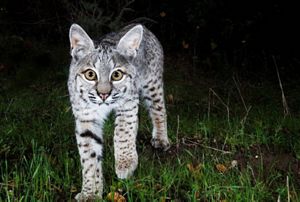
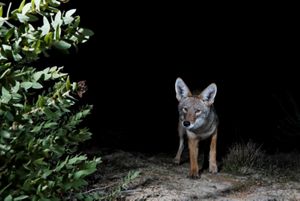
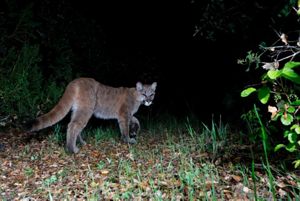
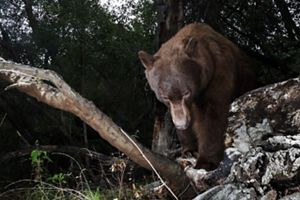
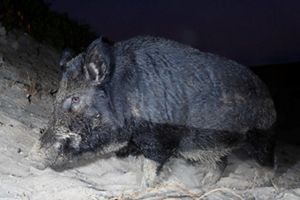

Curious Bobcat: This particular cat stared into a camera at our Dangermond Preserve long enough to take about 20 images. © John Stuelpnagel

Coyote in the Uplands: In the upland area of our Dangermond Preserve, we were able to capture one of our most common predators, a coyote (Canis latrans). © John Stuelpnagel

Mountain Lion Cub: You can identify a mountain lion cub because of their camouflaging spots and rings around their tails that fade as they mature. © John Stuelpnagel

American Black Bear: Although black bears (Ursus americanus) are not considered threatened or endangered, these species require large tracts of land with minimal human disturbance to thrive. © John Stuelpnagel

Wild pig: Invasive wild pigs (Sus scrofa) are regulars at Percos Beach in the summertime when the upland heat and lack of water drive them toward the coast. © John Stuelpnagel

Lesser Prairie Chickens at Smoky Valley Ranch
During April and May, tune into livestream cameras at our Smoky Valley Ranch Preserve in Kansas. The birds are active in the morning and early evening, but don't worry if you miss them live. You can scroll the video back to see previously recorded activity.

Tracking Wildlife in New Hampshire
Researchers deployed more than 30 motion-sensing cameras along a rural highway in New Hampshire to help find the places where they are crossing.
Trail Camera at Gila Riparian Preserve
Dr. Keith Geluso, a biology professor at the University of Nebraska at Kearney, had a hypothesis: the Gila River and its floodplain—with its natural flow regime—likely support a vast number of mammals. But there wasn’t much research. That’s why he set up a camera at our Gila Riparian Preserve. Click the photos to see some of his discoveries.
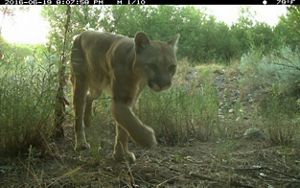





Mountain Lion: Mountain lion via preserve trail motion sensor camera © Keith Geluso/The Nature Conservancy

Animal Camera at Gila Preserve: New Mexico’s state animal, American black bear, made an early appearance. © Keith Geluso/The Nature Conservancy

Collared peccary: Also known as javelinas, peccaries often cool off in wooded areas during the hottest part of the day. It’s also a good place to forage for plants. © Keith Geluso/The Nature Conservancy

Common gray fox: Mostly nocturnal, foxes head out shortly after sunset to prey on small mammals like cottontail rabbits and ground-dwelling birds. © Keith Geluso/The Nature Conservancy

Desert cottontails: Abundant in the Southwest, this arid-adapted rabbit has large ears that help dissipate heat and keep them from overheating. © Keith Geluso/The Nature Conservancy
Protecting Critical Habitat
Camera traps and livestream cams are just two tools used in protecting land and water.
